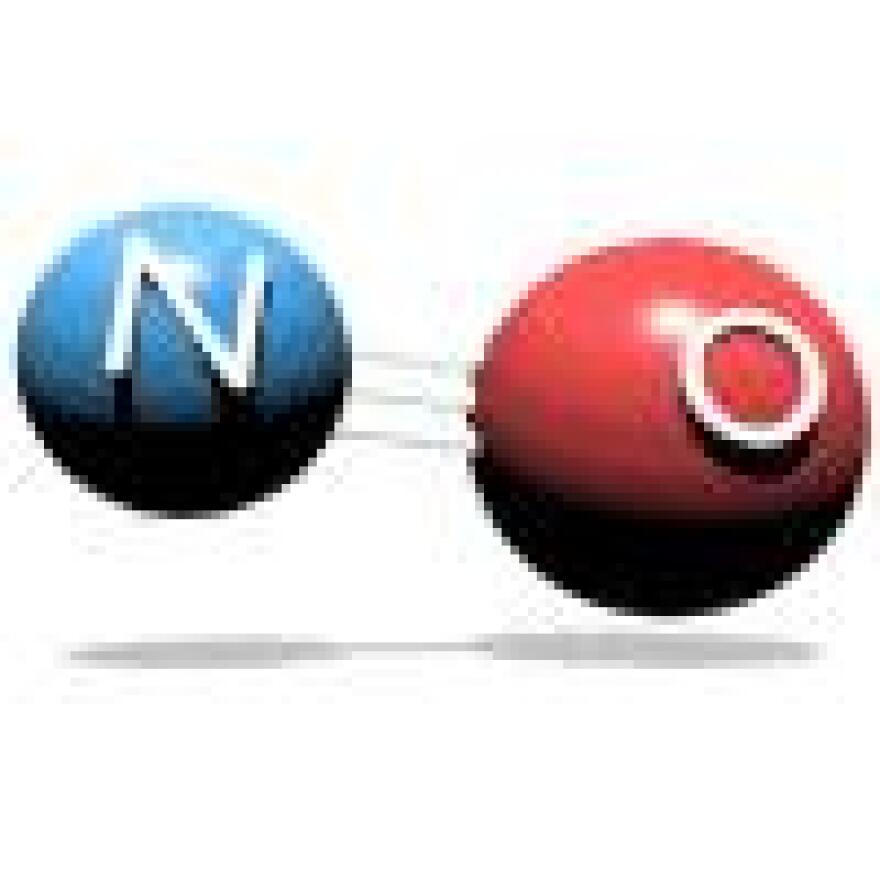People breathe in oxygen and exhale carbon dioxide - that’s the respiratory cycle as it’s long been known.
But researchers in Cleveland say there’s more to the story, and it may be time to rewrite the text books.
In this week’s Exploradio, WKSU’s Jeff St.Clair reports that one other gas is necessary for life.
Dynamite and chest pains
What do dynamite, Viagra, and new born babies all have in common?
They all use the power of NO.
NO is the chemical symbol for nitric oxide, a colorless, odorless gas, without which, according one Cleveland researcher, life as we know it could not exist.
But the story of NO begins with the invention of dynamite.
Some workers in Alfred Nobel’s nitroglycerin factory suffered from angina – or chest pains – and doctors noticed that during the week they felt better, but worse on the weekends.
They realized the workers were taking-in small amounts of nitroglycerin, and that nitroglycerin works to relax blood vessels - a vasodilator, that lowers blood pressure, and reduces pain.
From nitroglycerin to NO
It took 130 years for someone to figure out how nitroglycerin works to relieve chest pains, and that someone is Jonathan Stamler, director of the Harrington Discovery Institute at University Hospitals Case Medical Center.
“I always had in the back of my mind this desire to go back and solve the nitroglycerin problem,” says Stamler.
In 2002 he discovered a previously unknown enzyme cycle in the mitochondria that converts nitroglycerin into a form of nitric oxide the body can use.
And Stamler says he’s now proven that along with oxygen, the vasodilator NO is required for life.
“It is a three gas respiratory cycle. It’s not oxygen/carbon dioxide, its oxygen, nitric oxide, and carbon dioxide.”
Stamler says a nitric oxide molecule attached to the hemoglobin inside a red blood cell is needed for it to deliver oxygen to cells.
“A red cell can’t oxygenate, notwithstanding how much oxygen it carries, if it doesn’t also carry some NO,” says Stamler.
A baby's first breath of NO
Raed Dwiek, director of the Pulmonary Vascular Program at the Cleveland Clinic says the discovery is groundbreaking.
Medical textbooks are being rewritten to include nitric oxide's role in physiology, says Dwiek. "When I went to medical school we knew nothing about nitric oxide.”
He says nitric oxide inside the red blood cell works as its own vasodilator, opening up the blood vessel walls to allow the oxygen-bearing cell to squeeze through.

“It’s like your own crowd control," says Dwiek, "opening the way for you as you go through.”
The body makes NO in our lungs and sinuses, and floods our system with our first crying breath.
“And that cry," says Dwiek, "is a big gulp of nitric oxide that comes from the sinuses to vasodilate and open-up the blood vessels in the lungs.”
Getting NO right
But NO has a dark side. It’s one of the major components of smog, for example, and Dweik says too much NO can cause asthma.
Nitric oxide needs to balanced just right in every organ and system of the body, he says, “too much of it is not good, too little of it is not good."
Dweik draws on the vasodilation power of NO to help patients with pulmonary hypertension.
He’s treating the lung disease with a drug that prolongs the effects of nitric oxide in another part of the body, Viagra.

“It allows the blood vessels to dilate, and they feel better," he says. "They can do more, and their oxygenation improves and everything.”
He says wider use of nitric oxide is on the way, and inhaled directly in treating diseases like pulmonary hypertension.
But some people will never need to carry an NO canister.
Case anthropologist Cynthia Beall is a pioneer in the study of how people live at high altitudes with low oxygen.
She discovered that people in Tibet don’t have more red blood cells than us low-landers, they produce more NO.
“We were measuring nitric oxide in exhaled breath," says Beall, "and the Tibetans were making tons of it!”
She says NO opens blood vessels, “and if you’ve got a bigger highway, you can deliver more blood.”
Hemoglobin releases NO for oxygen delivery
The power of NO has even attracted the attention of the body building industry.
A quick search shows tons of ads for vein-popping nitrogen boosters, and recipes for high nitrogen beet juice to boost performance.
Unlocking the secrets of nitric oxide has been the life work of University Hospitals’ Jonathan Stamler.

“Red blood cells dilate blood vessels. We discovered that. There was no such thing before.”
His latest paper, published in May in the Proceedings of the National Academy of Sciences, details the mechanism of how nitric oxide binds to hemoglobin, solving a decades long mystery.







